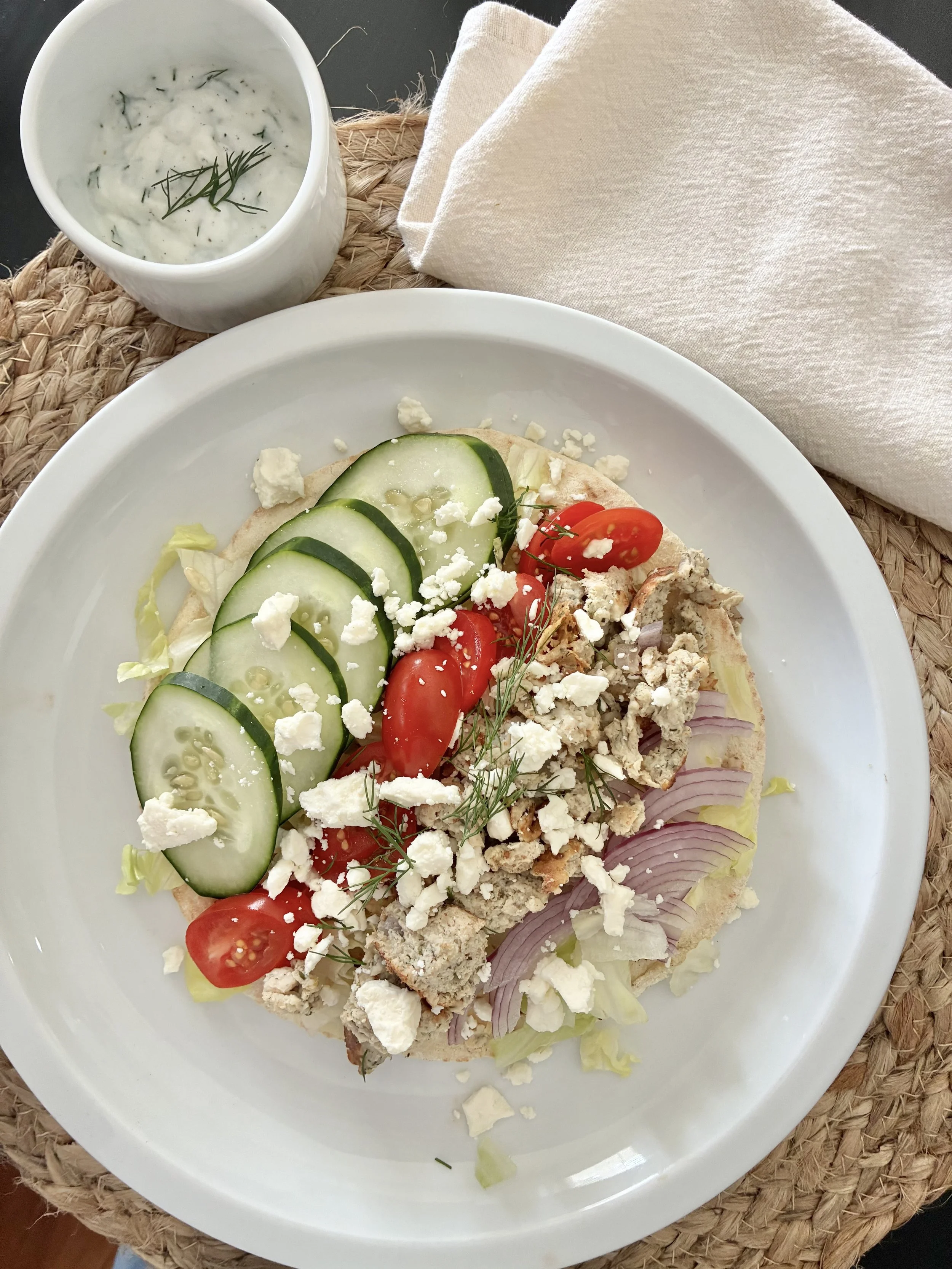4 Foundations of Weight Loss: The Basics of Losing Fat
/
By Margot Rutigliano, CPT, CHC, Pn2 | Founder Vita Vie Retreat
The number one question that I get asked about and our team is asked about is weight loss. Most of our wellness retreat guests are here to improve their body and health on some level. Weight loss is a journey that many begin on, seeking better health, increased energy, and improved self-esteem. While there is no one-size-fits-all approach, understanding the basics of weight loss and integrating a diet that supports long-term health can set you on the path to success. In this post, we’ll explore the foundational principles of weight loss and introduce the Mediterranean diet as a nourishing, sustainable way to achieve your weight loss goals.
Understanding Weight Loss
At its core, weight loss is about energy balance. Simply put, if you consume more calories than your body uses, the excess is stored as fat, leading to weight gain. Conversely, if you burn more calories than you consume, your body will use stored fat for energy, resulting in weight loss. This is often summarized as “calories in vs. calories out.”
However, weight loss is not just about calories. Factors such as metabolism, muscle mass, diet quality, and lifestyle habits also play crucial roles. It’s important to adopt a holistic approach to weight loss, combining healthy eating with physical activity, mindful monitoring, and self-care.
Below are four foundational action items that will support your weight loss journey. While these might feel obvious, if you’re not doing them consistently, then there isn’t the need for advanced tools or techniques (aside from health issues). These are the foundations that most people should be doing regularly and consistently in order to move forward with weight loss and wellness goals.
1. Adopt a Balanced, Nutrient-Dense Diet
A balanced diet is the cornerstone of healthy weight loss, and one of the best models to follow is the Mediterranean diet. This diet is rich in fruits, vegetables, whole grains, lean proteins, and healthy fats, making it ideal for weight loss and overall health.
The Mediterranean diet emphasizes:
Fruits and Vegetables: A wide variety of colorful, fresh produce, which are high in fiber and antioxidants, helps you stay full and nourished while managing weight.
Healthy Fats: Olive oil, nuts, and seeds are the primary sources of fat, providing heart-healthy fats that can keep you satisfied without overeating.
Lean Proteins: Focus on plant-based proteins, legumes, and fish, such as salmon and sardines, which are rich in omega-3 fatty acids that support metabolism and fat loss.
Whole Grains: Replace refined grains with whole grains like quinoa, brown rice, and whole-wheat pasta for a steady supply of energy and fiber.
Key Tips to Get Started:
Prioritize whole foods and aim to fill half your plate with vegetables and fruits.
Choose healthy fats, like olive oil, avocado, and nuts, over processed oils and trans fats.
Opt for lean proteins such as fish, chicken, beans, and legumes.
Limit processed foods, added sugars, and unhealthy fats that contribute to weight gain.
2. Increase Physical Activity
Physical activity is crucial for burning calories and improving overall health. It also helps preserve lean muscle mass, which is important for a healthy metabolism. To incorporate more activity into your routine, try activities that you enjoy and that align with your fitness level. The Mediterranean lifestyle also encourages physical activity, from leisurely walks to socializing through dancing or playing sports.
Ways to Stay Active:
Find Activities You Enjoy: If you do what you love, then you’re so much more likely to be consistent! Whether it's walking, cycling, swimming, or dancing, find activities that you love to stay consistent.
Mix Cardio and Strength Training: A combination of cardiovascular exercises and strength training is key to maximizing fat loss and building lean muscle. *Don’t skip strength training!
Stay Active Throughout the Day: Incorporate movement into your daily routine, such as taking the stairs, gardening, or walking during breaks.
3. Monitor Your Progress
Tracking your progress is essential for staying on course and making informed adjustments to your plan. Monitoring allows you to reflect on your successes and areas for improvement, helping you stay motivated. Consider tracking the following:
Food Intake: Use a food diary or app to log your meals and snacks. This helps you identify patterns and make healthier choices.
Physical Activity: Keep a record of your workouts, including the type, duration, and intensity of exercises.
Biomarkers: Track factors such as sleep quality, energy levels, and digestion, which can give insight into how your body is responding to your lifestyle changes.
Regular Weigh-Ins: Weigh yourself weekly, but avoid obsessing over the scale. Look at trends over time rather than daily fluctuations.
4. Prioritize Sleep and Stress Management
Adequate sleep and stress management are often overlooked but are critical for weight loss and overall well-being. When we’re stressed or sleep-deprived, it can lead to emotional eating, hormone imbalances, and poor decision-making. Both are essential to maintaining a healthy metabolism and controlling cravings.
Tips for Restorative Sleep and Stress Management:
Sleep: Aim for 7-9 hours of quality sleep each night. Good sleep regulates hormones that control hunger and appetite, helping prevent overeating.
Stress Reduction: Chronic stress can increase cortisol levels, leading to weight gain, particularly around the abdomen. Practice mindfulness techniques like meditation, yoga, or deep breathing exercises. Engaging in hobbies or spending time outdoors can also reduce stress and boost mood.
A Holistic Approach to Weight Loss
Weight loss is a multifaceted process that requires a balanced approach, integrating proper nutrition, regular exercise, mindfulness, and stress management. By adopting a Mediterranean-style eating plan, you’ll nourish your body with the essential nutrients it needs while enjoying delicious and satisfying meals. Focus on making small, consistent changes rather than seeking quick fixes, and be patient with yourself as you work towards your goals. Sustainable weight loss is about building habits that support your long-term health and well-being.
Remember, it’s not about perfection—it’s about progress. Embrace the journey, stay consistent, and celebrate the small wins along the way!
→ Your Next Step: Choose one action or habit to work on for the next week. Evaluate how it worked for you and whether it’s something you want to keep in your habit library or shelve for later. Week by week, continue to introduce new habits and reflect on what works or what doesn’t. Starting too many things at once means it’s difficult to understand what’s actually working.
SAY HELLO TO HEALTHY WEIGHT LOSS WITH THE MEDITERRANEaN DIET REFRESH
One of our most complete programs, the Mediterranean Diet is touted as one of the healthiest in the world. It’s naturally anti-inflammatory and promotes a balanced lifestyle that you can live with for good. With our program, you’ll enjoy:
9 week guided journey
Over 200+ recipes
Done-for-you meal plans
Weight loss guidance
Customization for your own lifestyle
Progress tracking & more!
Get the Mediterranean Diet Refresh today!






















